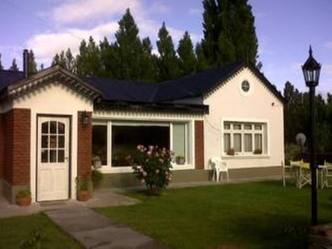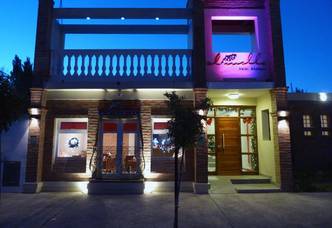The water bodies flowing through the Colonia Sarmiento area are popular spots attractive to fishing, water sports enthusiasts or visitors who simply choose these beaches to relax.
We visited the town called
Sarmiento and strolled down its dusty streets. Shortly after chatting with its denizens, we noticed how proud they were about their water bodies which host a variety of sport and agricultural tourism activities. These water bodies receive the waters of the Senguerr River from the Andes Mountain Range. As fishing in Lake Musters is allowed all year round, a great number of anglers are encouraged to come in search of quality and size. The fishing seasons are controlled in the rest of the basin. This lake system is home to abundant fish species, mainly, native species such as Argentinian silverside, perch and catfish as well as exotic ones, brook, rainbow trout and, to a lesser extent, brown trout. Lake Musters was formerly known as “Otrón” by the ancient residents of
Tehuelche or
chonik origin. Naturalist and geographer “Perito” Francisco Pascasio Moreno once wrote in his maps that this lake had been named after a traveler named Musters in memory of his journey around the area.
Amazing Stories in the Old Books of Yellow Colored Pages George Chaworth Musters, a brave English character, travelled along a strip of land in
Tierra del Fuego in 1869 and on one occasion he had the chance to accompany a
Tehuelche caravan on their way to meet the
Mapuche people in order to discuss certain issues. He was welcomed by both tribes and they managed to live altogether peacefully. The name of Lake Colhué Huapi comes from the
Mapuche tongue and refers to the chalky soil on the islands or clay colored waters. “Colhué” stands for “red or reddish place” and “Huapi” for “island”. It has muddy shores, especially, in the area of channels of the Falso Senguerr River. A 12-kilometer wide isthmus separates this lake from Lake Musters. Unlike Lake Musters, this water body has muddy waters, which do not affect the growth of good aquatic animals such as perch and Patagonian silverside as well as three more native endangered species: South American catfish, jollytail and bigmouth perch.
In 1973, a group of sportsmen from Colonia Sarmiento carried out the extraordinary feat of joining both lakes through the Senguerr River, an adventure which has gone in the history of this town. Lake Musters is well-known for its rough waters and hard navigation. There are two municipal campsites in the downtown are, besides those situated along the water courses in the region. That is the reason why most visitors choose to enjoy outdoor life. The water courses in Sarmiento provide good conditions for agricultural exploitation. Fruit, vegetables and alfalfa are produced, as well as salmon and silverside. In spite of the cold climate and the arid soil in this Patagonian central corridor, the valley where Sarmiento is located is a promising fishing area surrounded by incredible unspoiled nature. Mónica Pons
Gentileza Institutodelagua.chubut.gov.ar



















